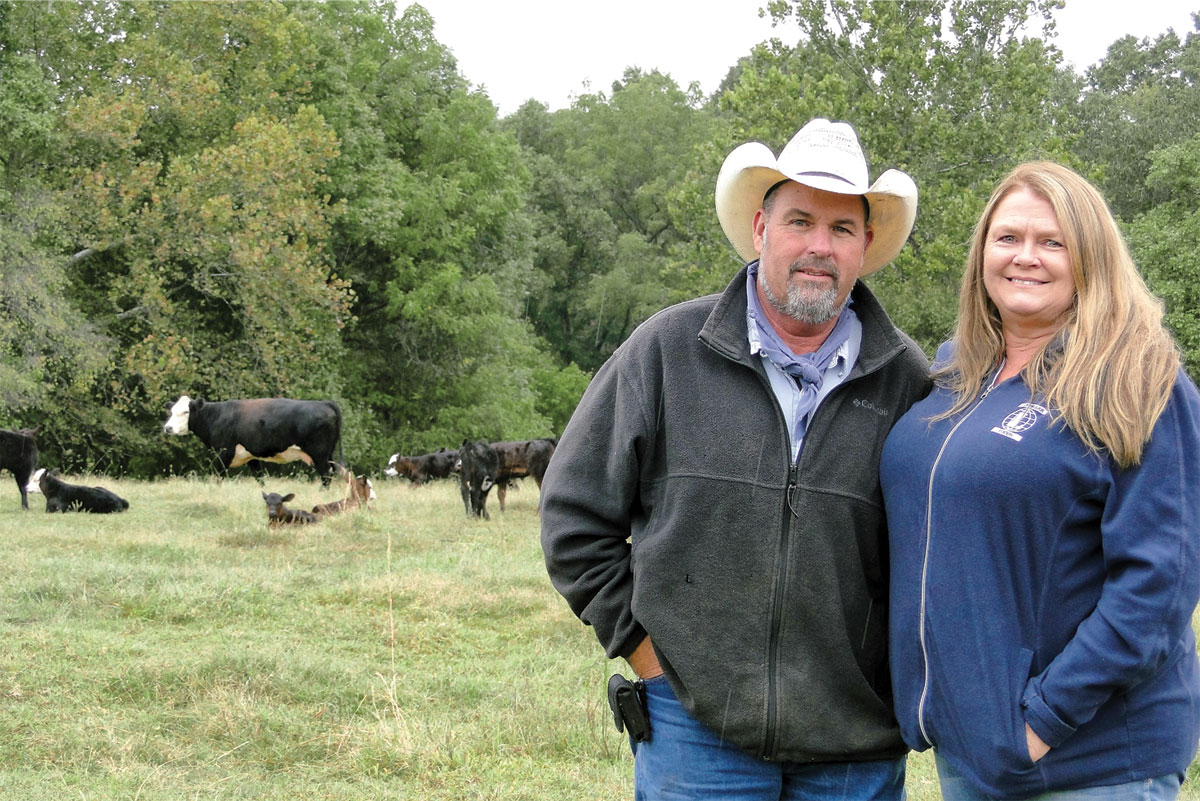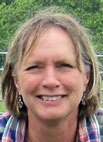
Couple likes the different elements offered in the farming way of life
Tim and Lee Holland of Gentry, Ark., have been in agriculture all of their lives and are contributing to several of various aspects needed to bring food to people’s tables.
Both were raised on farms. Tim remembers being 5 or 6 and watching his first calf being pulled then driving an old shifter truck to feed his dad’s cattle when he was 10.
Later, when Tim was 14, he bought his first truck for $650 and began making money by hauling hay. Lee’s early childhood, on the other hand, was in Iowa on a crop farm.
They had fun, especially with some mustangs her father bought out of South Dakota. They broke them and Lee and her siblings participated in Little Britches Rodeo nearly every weekend. She and her three sisters and parents spent summers hoeing beans, starting when she was 4.
“I still have scars from hooking myself while working in the bean field,” Lee said. “Then when I was 12, our family moved to Missouri to our new chicken and commercial beef ranch. Later, we had layer hens.”
The couple still thrives on diversity. Lee worked for Peterson Farms for about 10 years in the sales office but could see no upward mobility. Then she was approached in 1997 by Landmark Foods from Plano, Texas, to become a chicken broker, working with companies like Tyson’s and George’s, buying and selling processed chicken for distributors nationwide. She was able to make more money, have more flexibility, and could work out of her home.
“When things go wrong on loads, my customers have said, ‘Don’t give me the labor pains, just give me the baby,’ in other words, get my chicken here on time,” Lee said with a laugh.
Lee’s job is to find the best prices by buying extra loads and to arrange for and troubleshoot the delivery process handling issues such as negotiating pricing, breakdowns and underweight loads. Demand is high, with her biggest problems being finding trucks and dealing with rising freight costs while keeping up with market variability.
Tim is a hands-on guy who works for other cattlemen in the area. Still continuing what he started as a youngster, he moves and hauls hay, as well as transporting loads of cattle, occasionally horses, and once a load of buffalo. He also hires out for whatever else someone needs such as catching “crazies” on horseback and taking them to the sale barn.
“We have two horses that I use occasionally on my place as well as for others, but, in all honesty, it’s too easy to turn a key,” Tim said, “
The center of the Holland’s agricultural life is raising commercial cattle. The family farm owns and leases 640 acres on which they maintain 150 to 200 cows, most of whose bloodlines contain Hereford and Angus with some Charolais. Early on, Tim used a Charolais bull with Herefords when he was striving for yellow bald-faced calves. Now he runs eight registered Hereford and Angus bulls to produce black baldies because he feels the combination takes advantage of the Angus advertising campaign promoting black cattle along with the Hereford advantage of a bigger frame and more total weight.
“It only makes sense to go with the trend and give the consumers what they want. Right now they want black,” explained Tim.
Tim runs both fall and spring calving seasons and sells the calves off the cow at 7 to 8 months already having received two rounds of vaccinations.
Some years Tim retains heifers as replacements. This year he kept 50 because some of his mommas are aging. He will cull from that group according to temperament or if they don’t breed the first time. He tends to keep a cow as long as she is holding up, doesn’t produce substandard calves or miss two cycles. Consequently, some mommas are 16 years old. Tim will also keep a heifer if she bears a dead calf for one more cycle before selling. He has one young momma who gave birth the first time to twins and then triplets. She has had a total of nine calves while her contemporaries have only had four. He describes her as being a little “twitchy” but obviously very productive.
The feeding protocol is fairly simple. The cattle are mostly grass fed with free choice loose mineral and salt. In the winter he supplements with protein tubs and hay.
Tim hays 200 acres and buys the rest of his hay locally. His fields are fescue and Bermuda with some clover. Fields are seeded and fertilized only when needed. When he does fertilize, he sprays because spraying meets his needs in terms of price versus effectiveness. He uses Grazon for weeds in spring but will spray in the fall as well if conditions demand. While he spot sprays occasional cockleburs, thistles have been mostly eliminated.
“Some days are not simple or easy, but we’ve made it work,” Lee said. “Our five girls have all graduated college and have careers.”
When their girls were younger, Lee would line them up on the sofa, so Tim could pat each one on the head on his way through. Regardless, they have all had experience helping on the farm. Now Tim and Lee have nine grandchildren, five boys and four girls from ages 3 through 13. The kids love to come visit even knowing they have to check cows, move hay, or whatever is happening that day as a natural part of it. They always want to stop at the Osage River to throw rocks, go fishing or just jump in. Maybe there is a future cattleman there somewhere.
Not surprisingly, Tim has slowed down over the years, but only a little, as anyone that knows him is not much. He sees it as just one of the challenges ahead. Nonetheless, Tim and Lee happily pursue their diverse agricultural lifestyle.






